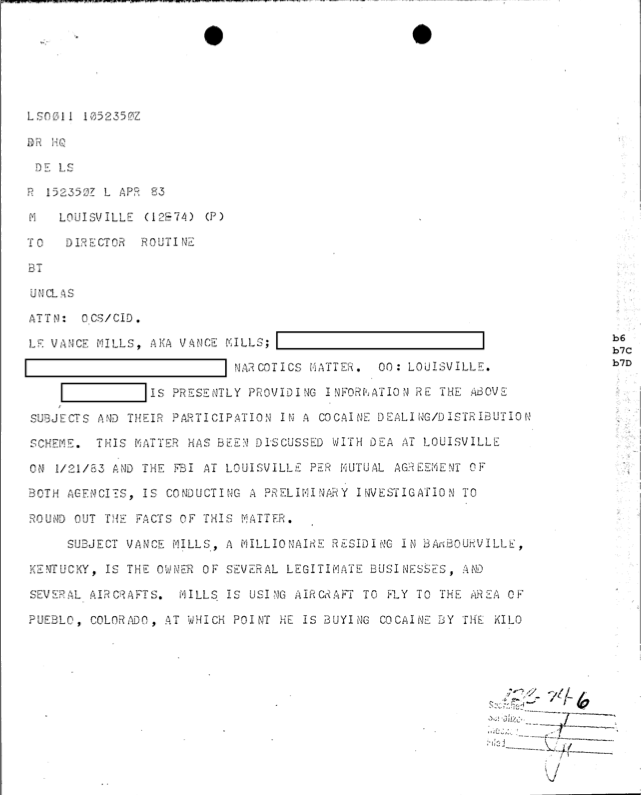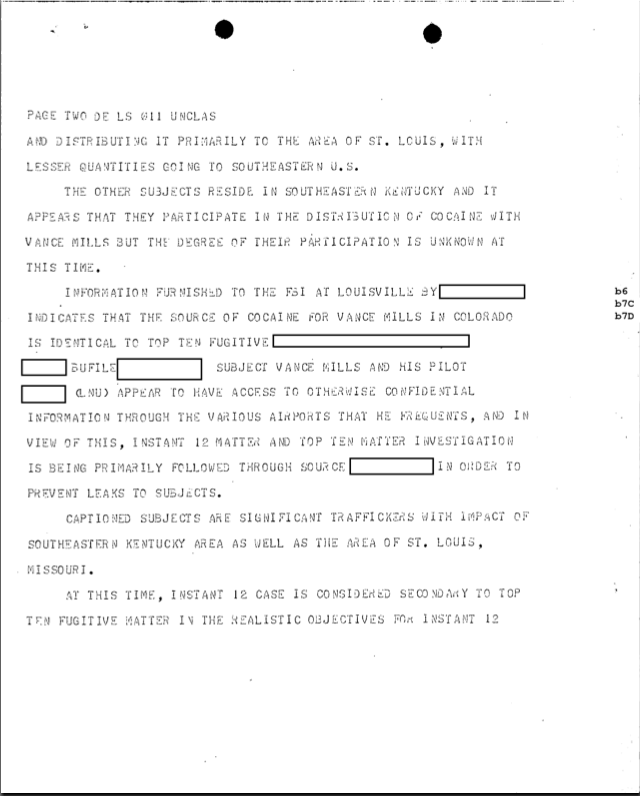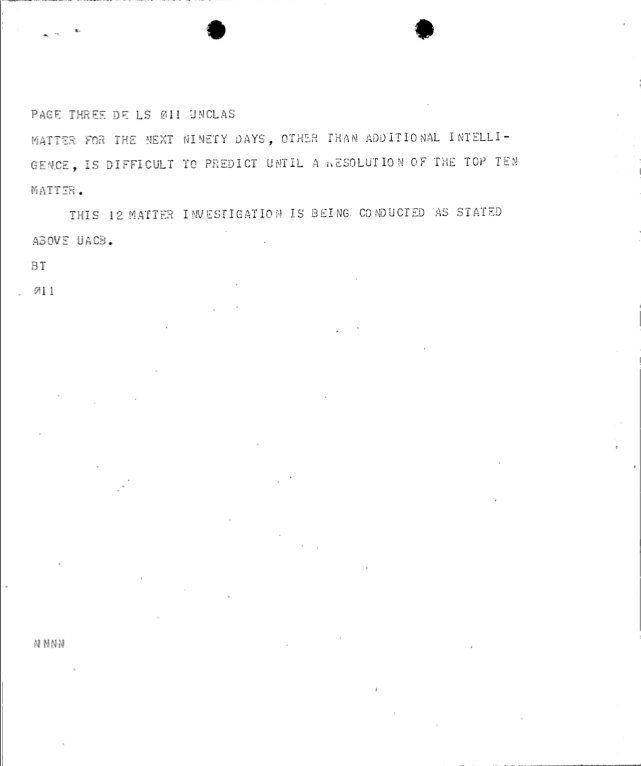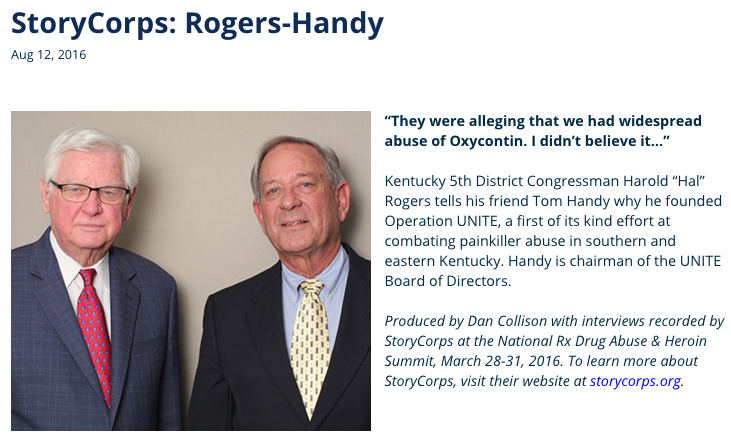A wildly popular thread on the Lexington, Kentucky Topix forum filled with facts, theories, and inevitably fiction, titled “The Bluegrass Conspiracy” (a reference to Sally Denton’s book The Bluegrass Conspiracy: An Inside Story of Power, Greed, Drugs and Murder) contained a short, obscure statement from an anonymous author referencing a “huge London, KY connection” in regards to the notorious drug ring which included characters Drew Thornton, former governor John Y. Brown Jr., Harold Vance of the DEA, Kentucky State Police Commissioner Marion “Butch” Campbell, and former Lexington Police Department investigators Johnny Bizzack and Bill Canan. I became convinced that London, Kentucky connection was Larry C. Allen, an attorney dubbed “Lyin’ Larry,” and posted a reply statement to that effect on December 20, 2018.
Unfortunately, Topix, the oft-maligned forum style website was erased from internet history that very same day, just a few hours or less after my simple statement. Probably a coincidence, but one can’t help but wonder, especially when you’ve considered the possibility the website itself was an intelligence operation, a honey pot enticing citizens from all walks of life to give up information on their neighbor, community, and even themselves that could prove useful to law enforcement, information to which law enforcement normally wouldn’t be privy.
I still believe Larry C. Allen may be the key to understanding how there was such a terrible breakdown of justice in southeast Kentucky, particularly Laurel and Knox Counties. I’ve been tracking him ever since his name surfaced in a March 15, 1986 news article when researching other characters in Sally Denton’s “Bluegrass Conspiracy.”



Larry C. Allen was connected to Marion “Butch” Campbell, KSP Commissioner and Bluegrass Conspiracy character. Fascinatingly, he was also connected to drug kingpin from Maryville, Tennessee, Jerry Allen Lequire.

(Don’t forget that Bonnie Sue Anders’ brother was best friends with Glenda and Dorman Lickliter; Glenda served on the jury that convicted Delmar Partin of a murder he did not commit, a case prosecuted by Commonwealth Attorney Tom Handy.)
The fact Larry Allen and Tom Handy were both from London, Kentucky, and both took their bar exam together, made it a very good possibility they knew each other; maybe they even attended the same law school:

What’s compelling is the CIA connection to the Bluegrass Conspiracy story and the Jerry Allen Lequire tale, and the fact Larry C. Allen’s name seems to be the only other common connection between the two criminal enterprises besides the CIA.*
Richard Biggs, author of Species of Insanity: The Story of Drug Kingpin Jerry Allen Lequire, writes on his blog:
After Jerry’s near fatal mishap with his airplane after taking off from the Madisonville, TN airport, he was left without a plane and wanted by the police. He traveled to Atlanta to stay with a friend and called a lawyer acquaintance in Kentucky named Larry Allen. I’ve mentioned previously that his nickname was “lying Larry.” Allen knew a lot of people who could get things done and Jerry needed to purchase an airplane quickly. Allen agreed to meet with him in Atlanta. A day later, they made the arrangements. Allen said he knew a man in south Florida who could purchase anything Jerry needed if money wasn’t an issue. Jerry assured him it wasn’t. So, they agreed to meet in Kentucky. When Jerry arrived, Allen had arranged for a prostitute to give him a good time. Her name was Karla Espinal. And the man who would purchase the airplane for Jerry was Hank Maierhoffer. This meeting was a major turning point in Jerry’s life. Karla Espinal became the main person responsible for Jerry getting a 60 year prison sentence and Maierhoffer was a CIA agent.
A “huge London, KY connection.”
William “Tosh” Plumlee, a “former deep-cover military and CIA asset from 1956 to 1987” (Drugging America, Rodney Stich) told FBI agents in Cincinnati that in July 1958, “under the authority of a government cover agent, Larry Allen of Miami, Plumlee arranged to fly munitions to the Castro forces in Cuba.” Stich expounds on this in Defrauding America:
"In [the] FBI report, it was stated that...On or about July 5 he [Plumlee] flew a DC-3 airplane from Miami International Airport to an abandoned military airport on Marathon Island in the Florida Keys, where the plane was loaded with arms and ammunition and flew to Cuba, and was paid $900 by Allen."
Do you know who else used Marathon Island to smuggle narcotics into the country? Larry Allen’s drug kingpin friend, Jerry Allen Lequire. And in a previous post, I talked about Octavio Pino, a Cuban national who was trafficking drugs from Colombia into the United States, who mysteriously ended up in London, Kentucky, of all places.
Jerry Lequire apparently doesn’t reveal to author Biggs who told him about the Marathon landing spot, but I wouldn’t be surprised if it was the same Larry C. Allen.
But… according the newspaper article above, the Larry Allen of London, Kentucky would have been just a little too young, maybe about 10 years, to have been involved in the 1958 scheme with Tosh Plumlee.
Unless, as an undercover CIA agent, Larry Allen’s age was subject to change.
“Operation Mother Goose” was a CIA scheme “dealing with joint military selection, recruitment, and training of qualified enlisted men with security ratings. These people were educated and trained in basic covert and undercover activities. After training they were released from active military duty to enroll in colleges and universities…while under CIA supervision they infiltrated student movements…student activities…and other political areas.” (Drugging America, Stich.)
Is it possible Larry Allen was packed off to Kentucky for such a purpose? Could there be a connection between Larry Allen and former Commonwealth Attorney Tom Handy besides the coincidence they both passed the bar exam at the same time?
Not long ago, on a whim, I called 411 looking for Allen’s phone number. I was shocked to receive a valid number in response. I’ve called it many times with never any answer, never an answering machine. But when I searched the number on the internet, would you believe it came back listed as a secondary number for Holly Bay Campground, located right next door to the former marina of the same name owned by Tom Handy discussed in this previous blog post?


Holly Bay is misspelled “Holly Day,” but the address is accurately Holly Bay Campground. Holly Bay Campground and Holly Bay Marina are connected by a trail that runs between the two. Anecdotal stories tell of mysterious packages being dropped into Laurel Lake by low flying aircraft throughout the years.
If indeed Larry C. Allen made Thomas V. Handy’s acquaintance back in the late 60s or early 70s, it would have been one of southeast Kentucky’s darkest days in history.






















